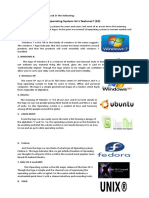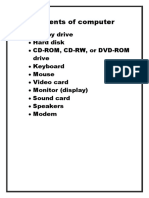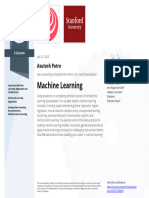0% found this document useful (0 votes)
24 views2 pagesComputer Networks Detailed Notes
The document provides detailed notes on computer networks, covering their definition, types (PAN, LAN, MAN, WAN), devices (switches, routers, modems), transmission media (wired and wireless), topologies (bus, star, ring, mesh, tree), protocols (TCP/IP, HTTP, FTP), IP addressing (IPv4 and IPv6), network security measures (firewalls, antivirus, encryption), and cloud computing benefits. It emphasizes the importance of networking for resource sharing and communication. The notes serve as a comprehensive guide for Class 12 students studying computer networks.
Uploaded by
playerunknown25003Copyright
© © All Rights Reserved
We take content rights seriously. If you suspect this is your content, claim it here.
Available Formats
Download as DOCX, PDF, TXT or read online on Scribd
0% found this document useful (0 votes)
24 views2 pagesComputer Networks Detailed Notes
The document provides detailed notes on computer networks, covering their definition, types (PAN, LAN, MAN, WAN), devices (switches, routers, modems), transmission media (wired and wireless), topologies (bus, star, ring, mesh, tree), protocols (TCP/IP, HTTP, FTP), IP addressing (IPv4 and IPv6), network security measures (firewalls, antivirus, encryption), and cloud computing benefits. It emphasizes the importance of networking for resource sharing and communication. The notes serve as a comprehensive guide for Class 12 students studying computer networks.
Uploaded by
playerunknown25003Copyright
© © All Rights Reserved
We take content rights seriously. If you suspect this is your content, claim it here.
Available Formats
Download as DOCX, PDF, TXT or read online on Scribd
/ 2






















































































